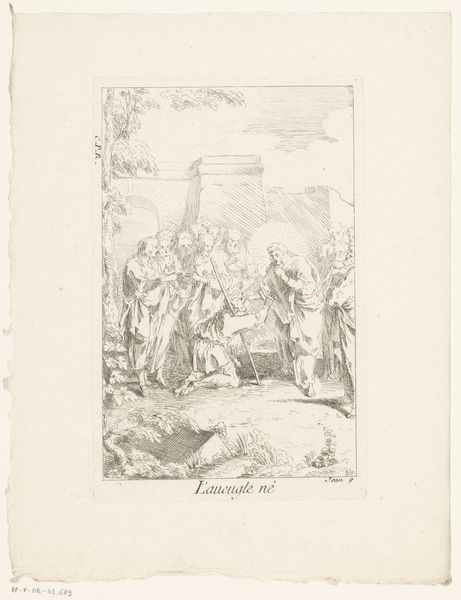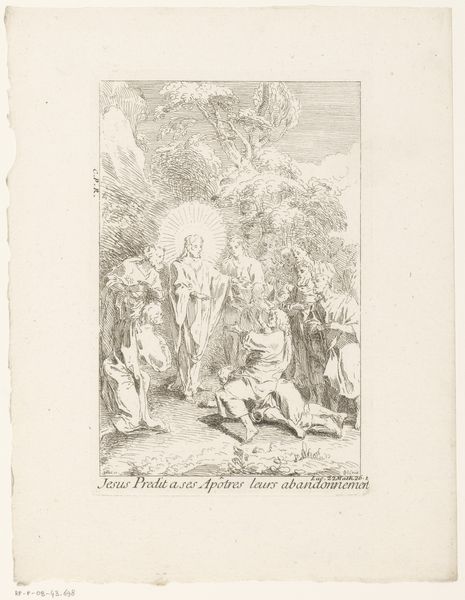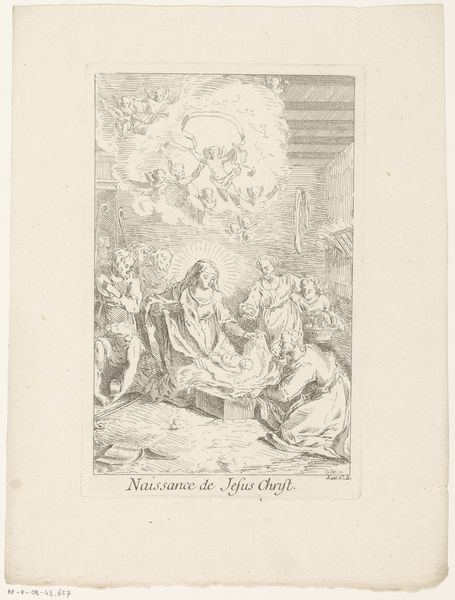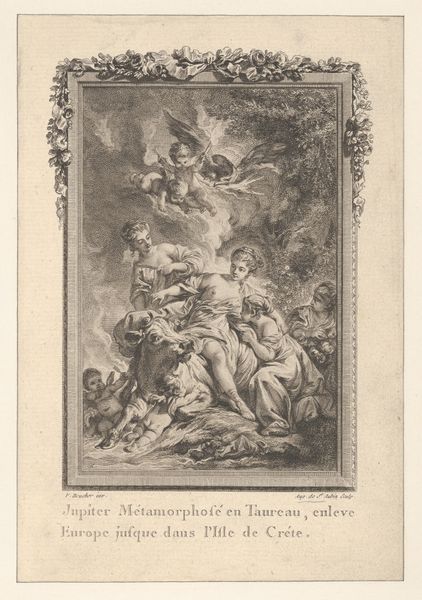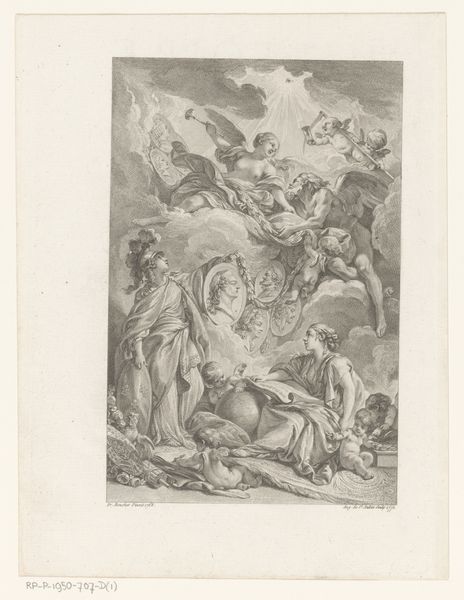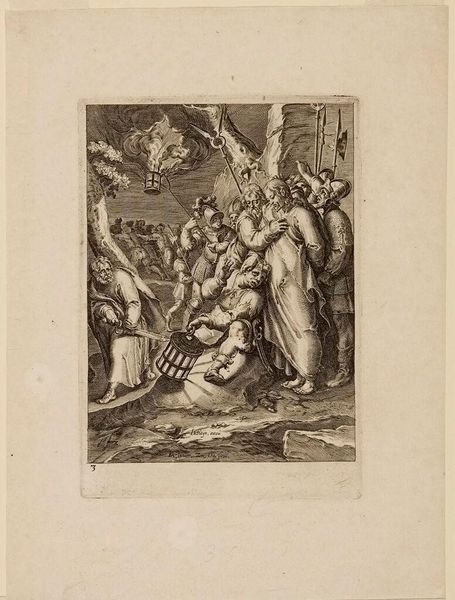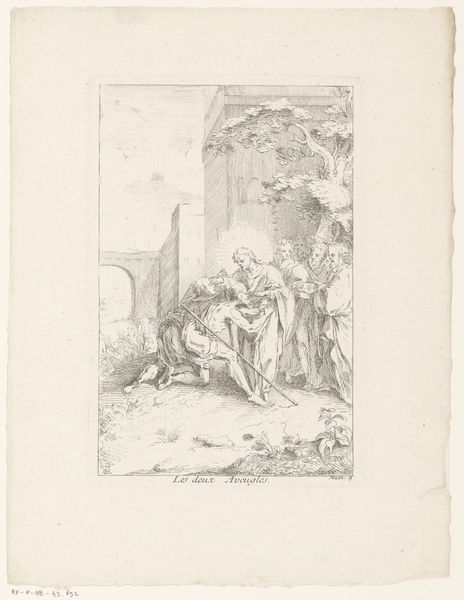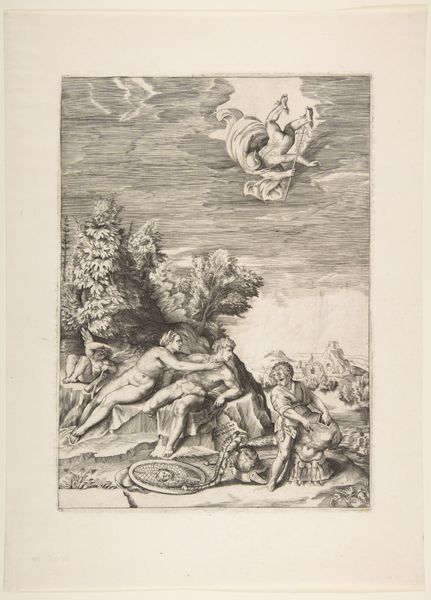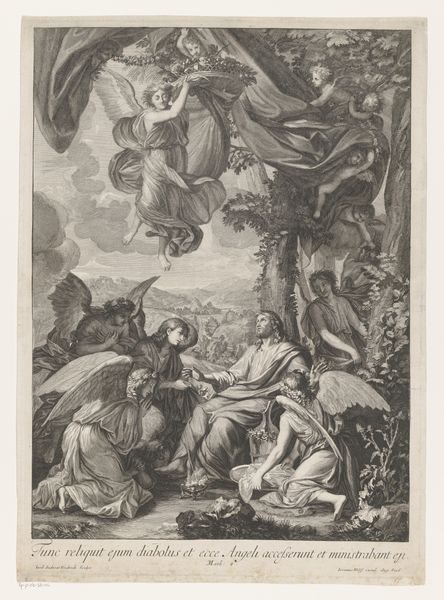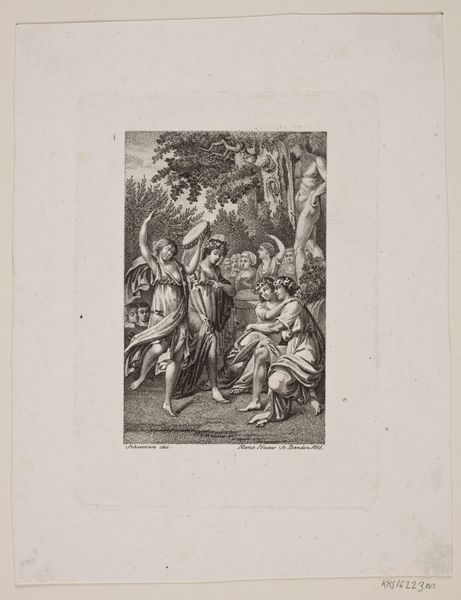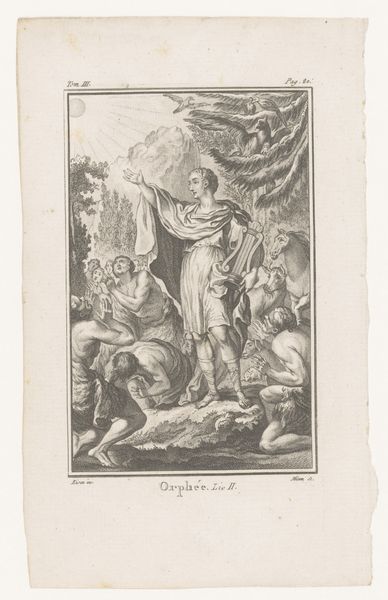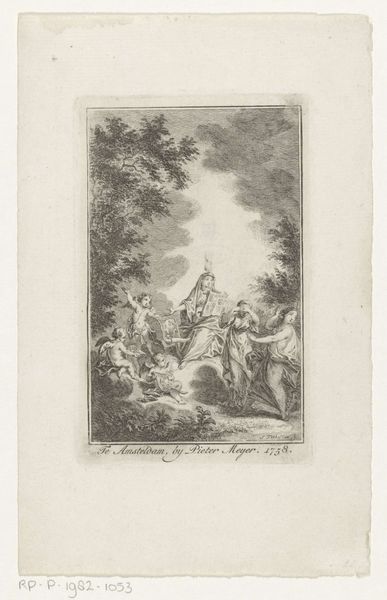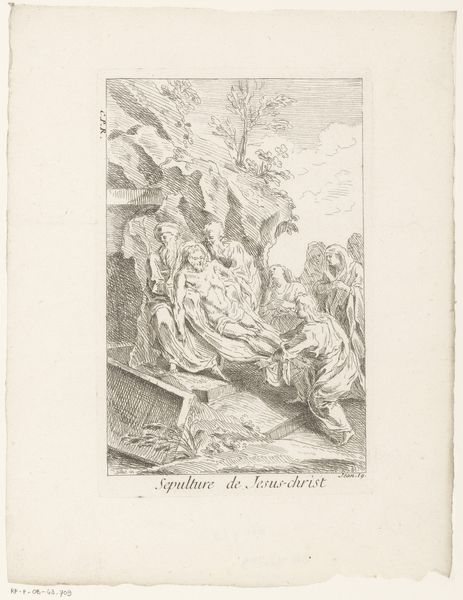
print, paper, engraving
#
baroque
#
ink paper printed
# print
#
old engraving style
#
figuration
#
paper
#
pen-ink sketch
#
line
#
sketchbook drawing
#
history-painting
#
engraving
Dimensions: height 199 mm, width 128 mm
Copyright: Rijks Museum: Open Domain
Curator: This engraving, titled "Hemelvaart van Christus" or "The Ascension of Christ," was created by Gabriel Huquier sometime before 1732. It’s currently held in the Rijksmuseum. Editor: My first thought? Airy. There’s something incredibly delicate about those lines, the way the artist suggests form without ever fully committing. It’s like a whispered promise, ascending. Curator: The ascending figure of Christ is quite typical iconography; notice how Huquier used line to render not only the body but a tangible sense of upward motion, toward the heavens. Light radiates outwards—an aura of divinity, definitely echoing older visual traditions of Christ ascending, but still very baroque in its drama. Editor: Drama indeed. Everyone down below seems totally bewildered. Some are shielding their eyes, others are prostrate. It’s that moment when the familiar world shifts, and they're clearly not ready for it! It almost makes you feel bad for them. Like, “Guys, a little faith? He told you he was leaving!” Curator: That kind of reaction among the Apostles is part of the narrative—doubt, wonder, awe. All contribute to communicating the magnitude of the event, how it alters perception of earthly existence itself. What are our responsibilities when such miraculous things occur? The figures almost function as stand-ins, inviting the viewer to witness. Editor: And the choice of engraving... I wonder if there's something intentional in choosing that medium. It's so inherently reproducible, democratizing this image and its potent symbolism. Did this make the awe and wonder more…accessible? Curator: Possibly. Printed images spread quickly, so disseminating ideas visually was quite effective, a means of educating the public about scripture. Plus, notice how the artist layered hatching and cross-hatching techniques to give volume and shadow with nothing more than a very light ink on paper, but that makes it feel somewhat unfinished in comparison to the completed paintings that commonly portray the scene. Editor: True, this sketch-like quality enhances that airy feeling I mentioned before, like the image itself could lift off the page. Maybe a reminder that faith itself is often built upon what's unseen? Anyway, food for thought... Curator: Indeed. It’s amazing how a single print on paper can condense centuries of theological thought and artistic technique into one powerful, albeit subtle, statement.
Comments
No comments
Be the first to comment and join the conversation on the ultimate creative platform.
